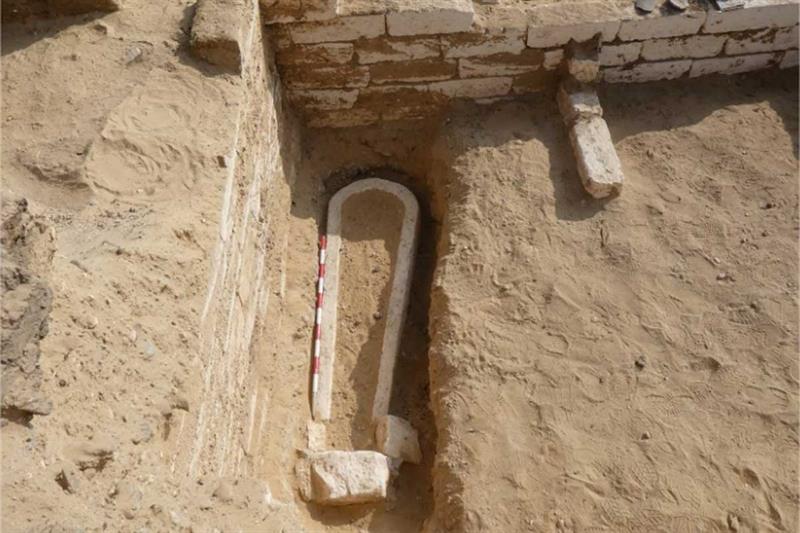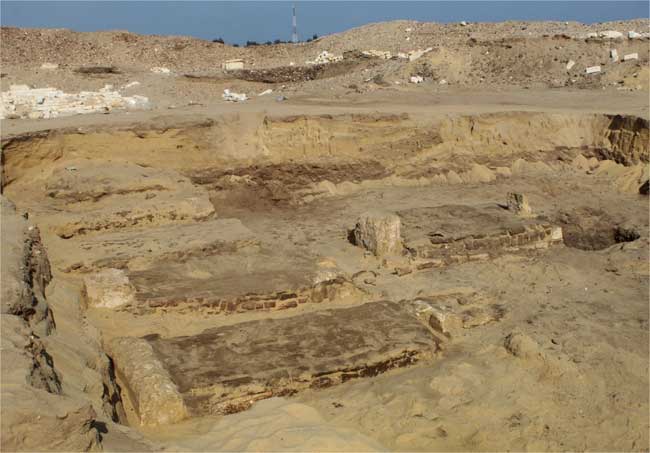|
|
|
|
When
with Rita Lucarelli (UC Berkeley), Max Jefferson (UC Berkeley), Ytasha Womack (Chicago), Vorris Nunley (UC Riverside), Darryl Smith (UC Berkeley), John Jennings (UC Riverside), Stanford Carpenter (University of Chicago), Claudia Attimonelli (University of Bari, Italy), Dexter Story (UCLA), Luciana Parisi (Duke University), Abu Qadim Haqq, and more.
Presented by Center of Middle Eastern Studies (CMES) with the support of the Berkeley Art Museum and Pacific Film Archive (BAMPFA), Center for Science, Technology, Medicine and Society (CSTMS), the Berkeley Center for New Media (BCNM), the Department of Middle Eastern Languages and Cultures (MELC), and the Italian Institute of Culture, San Francisco.
This two-day conference introduces a new project, which explores the reception and cultural imagining of Ancient Egypt and of its monuments, arts, writing and religion in the Black visual arts, music and literature through the lens of scholars and artists inspired by Afrofuturism. This project aims at creating a channel and platform of communication and collaboration among egyptologists, scholars of African and African-American studies, artists and musicians from the African Diaspora inspired by the ancient Egyptian and Nubian culture.
Friday, March 17
Afrofuturism, myth, and reception of Ancient Egypt and Nubia
2 pm: Rita Lucarelli (UC Berkeley): Introduction - "Space is the Place": space-traveling and endless pasts, from ancient Egypt to the Futures
2.30-3 pm: Max Jefferson (UC Berkeley): The Space Program: Music as Transportation and the Myth of Sun-Ra.
3 pm: Ytasha Womack (Chicago) and John Jennings (UC Riverside): Afrofuturism's Ancient Egyptian & Nubian inspirations
4 pm: Break
4.15 pm: Vorris Nunley (UC Riverside): Sankofa Psychology: Being, Becoming, and World Building a Past that Was Never Past
4.45 pm: Darryl Smith (UC Berkeley): A Boat-Sun in Orbit of the Pillars: Sacred Bearing in William Melvin Kelley's Book of the Dead
5.15 pm: Discussion (Discussant: Luciana Parisi, Duke University)
Saturday, March 18
Afrofuturism, Ancient Egypt and Black Visual Arts
9.30 am: Dexter Story (UCLA), Mothership Landing: Funk and The Afrofuturist Universe of '77
10.00 am: Stanford Carpenter (Oriental Institute, University of Chicago): Crafting Tomorrow's Heroes from the Echoes and Trace Remains of Ancient Cultures
10.30 am: Claudia Attimonelli (University of Bari Aldo Moro, Italy) and Abu Qadim Haqq (Detroit): The Book of Drexciya I & II, from the Bubble Metropolis to Techno-Electro vibes: afrofuturism from the deep Black Sea
11.00 am: Grace D. Gipson (Virginia Commonwealth University): Drawing and Mapping Black Futures: Comics and the Black Imagination
11.30 am-12 pm: Discussion and Final Remarks (Discussants: Luciana Parisi, Duke University and Rita Lucarelli, UC Berkeley)
The event is free and open to the public. Please contact info.bcnm [at] berkeley.edu with requests or questions.
With the consent of featured speakers, all recorded videos will be available on the BCNM YouTube channel immediately after the event and event transcripts will be posted to this page one month after the event. We strive to meet any additional access and accommodation needs.
BCNM is proud to make conversations with leading scholars, artists, and technologists freely available to the public. Please help us continue this tradition by making a tax-deductible donation today. If you are in the position to support the program, we suggest $5 per event, or $100 a year.©2017 UC Regents
-- Sent from my Linux system.
The Egyptian-Spanish archaeological mission from Barcelona University uncovered 22 tombs from the Persian, Roman and Coptic periods during excavation work carried out at the Al-Bahnasa archaeological site in the upper Egyptian governorate of Minya.

Many of the bodies found inside the tombs were protected with decorated shrouds.
One of the more notable finds were offerings consisting of two frogs deposited inside two jars.
Elsewhere in the necropolis, consolidation work has been executed on the structure of a Basilica found within the necropolis as well as the restoration of the mural paintings in the crypt, the statement added.
"The restoration team has carried out consolidation and restoration work both in situ and in the laboratory," pointed out Maite Mascort and Esther Pons, directors of the mission from the Spanish side.
They explained that epigraphic studies of the walls of the crypt of the basilica were carried out, along with the texts inscribed on papyri and ostraca (pottery).
Architectural consolidation-adjustment-restoration tasks have been carried out in different structures and areas of the site.
Aerial photographs with kites, 3D studies of structures and parts, as well as partial and general topography and photogrammetry of the site were also taken.
Work at the Al-Bahnasa site over the past archaeological season, which ended in January, focused on the upper necropolis, one of the most important and relevant areas of the site, said Mostafa Waziry, secretary general of the Supreme Council of Antiquities.
"It has been a very interesting season due to the numerous and unprecedented archaeological findings and the new scientific hypotheses raised," he said, adding that all the recovered material will advance study of the area.
Hassan Amer, professor of Egyptology at Cairo university and field director, said that the necropolis is divided into four sectors, where both archaeological work and anthropological studies of the exhumed individuals were carried out as well as consolidation and restoration of some of the wall paintings, and of the objects recovered during the excavation.



-- Sent from my Linux system.
 The American Research Center in Egypt, Northern California Chapter, and the Near Eastern Studies Department, University of California, Berkeley, invite you to attend a lecture by Dr. Branko van Oppen, Tampa Museum of Art: The American Research Center in Egypt, Northern California Chapter, and the Near Eastern Studies Department, University of California, Berkeley, invite you to attend a lecture by Dr. Branko van Oppen, Tampa Museum of Art: Roman Egyptian Mummy Portraits and the Artistic Circle of the St. Louis Painter Sunday, March 12, 2023, 3 PM Pacific Daylight Time Room 20 Social Sciences Building (formerly Barrows Hall) UC Berkeley Daylight Savings Time begins March 12.  Fig. 35, Mummy Portraits in the J. Paul Getty Museum (1982), David L. Thompson. (Image courtesy of Dr. Branko van Oppen) About the Lecture: In his publications Mummy Portraits in the J. Paul Getty Museum (1982), David L. Thompson attributed three Roman Egyptian funerary portraits to the same artist, whom he named the St. Louis Painter on the basis of a portrait of an elderly woman in the St. Louis Art Museum (SLAM inv. no. 128:1951; Thompson 1982, pp. 20–22, figs. 35–37). Without further information, Thompson acknowledged that "a number of other portraits are related to those by the St. Louis Painter and some to each other by these differences," and dated the activity of the artist's workshop to around 300 CE. Before and since, several other scholars have recognized the stylistic similarities between about a dozen funerary portraits from ancient Philadelphia (confusingly still called "Rubayat") with estimated dates ranging between 165-350 CE. This paper will re-examine the attribution of the portrait panels to the St. Louis Painter (also known as the Würzburg Painter), and suggest that some two dozen examples can be assigned to this anonymous painter, workshop or circle. Stylistic elements by which these paintings can be grouped together include a distinctively graphic hatching style. The portraits generally lack a sense of depth and perspective, though some foreshortening is often indicated on the left side of the face. The basic outline is usually drawn with a broader brush, while the individual details are applied with a thinner brush. The outline tends to follow basic physiognomic proportions that are not only common with other Roman Egyptian portraits, but with Roman portraits from contexts such as the wall paintings of Pompeii and Herculaneum. About the Speaker:  Dr. Branko F. van Oppen de Ruiter is the Richard E. Perry Curator of Greek & Roman Art at the Tampa Museum of Art. He received his PhD in ancient history from The City University of New York ('07), where he specialized in queenship during the period from Alexander the Great to Cleopatra. Before coming to Tampa, van Oppen worked for five years at the Allard Pierson Museum, Amsterdam. His academic interests further include clay seal impressions, animals in ancient material culture, Romano-Egyptian funerary portraits, as well as ancient religion and art history in general. Parking is available in UC lots all day on weekends, for a fee. Ticket dispensing machines accept debit or credit cards. Parking is available in lots around the Social Sciences Building, and in lots along Bancroft. A map of the campus is available online at http://www.berkeley.edu/map/ About ARCE-NC:
For more information, please visit https://facebook.com/NorthernCaliforniaARCE/, https://arce-nc.org/, https://twitter.com/ARCENCPostings, or https://khentiamentiu.org. To join the chapter or renew your membership, please go to https://www.arce.org/general-membership and select "Berkeley, CA" as your chapter when you sign up. |
-- Sent from my Linux system.
| Subject: | King Tutankhamun |
|---|---|
| Date: | Thu, 23 Feb 2023 14:45:02 -0800 |
| From: | W Benson Harer <wbhjr1@gmail.com> |
-- Sent from my Linux system.